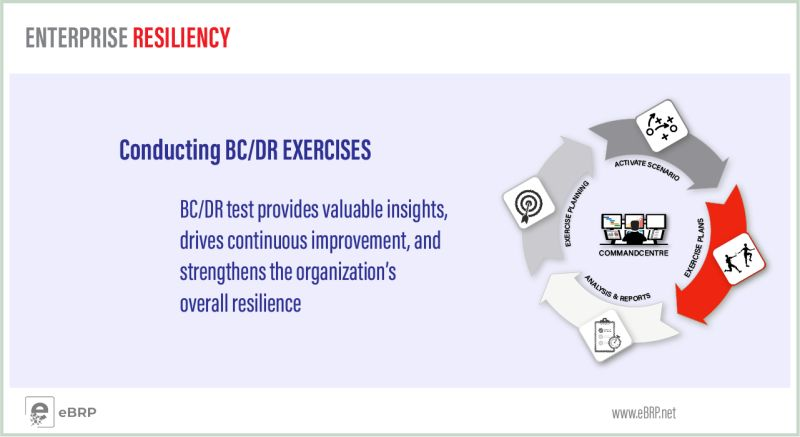Continuity Plans should ensure that critical services remain available to customers under adverse conditions. While the threats that cause disruptions may vary—natural disasters, cyber breaches, supply chain failures—the goal of a Continuity Plan is not to control every threat, but rather to maintain or quickly restore critical services that can impact the organization’s reputation.
𝗦𝗲𝗿𝘃𝗶𝗰𝗲-𝗙𝗼𝗰𝘂𝘀𝗲𝗱 𝗔𝗽𝗽𝗿𝗼𝗮𝗰𝗵
The purpose of a Continuity Plan is to keep critical services running or restore them rapidly if they fail. It’s not enough to just bring the IT system back online; the focus should be on ensuring that essential customer-facing services can still be delivered according to SLAs, or as close to them as possible.
𝗧𝗵𝗿𝗲𝗮𝘁-𝗔𝗴𝗻𝗼𝘀𝘁𝗶𝗰 𝗦𝘁𝗿𝗮𝘁𝗲𝗴𝗶𝗲𝘀
Although you consider various threats, plans should remain flexible and not hinge on a specific scenario. A Continuity Plan should enable the organization to respond effectively to any type of disruption. Build adaptable response strategies that can be applied to a wide range of incidents, rather than trying to address every possible threat individually.
𝗔𝘀𝘀𝗲𝘁 𝗥𝗲𝘀𝘁𝗼𝗿𝗮𝘁𝗶𝗼𝗻 𝗮𝘀 𝗮 𝗠𝗲𝗮𝗻𝘀, 𝗡𝗼𝘁 𝘁𝗵𝗲 𝗘𝗻𝗱
Facilities, people, technology, data, and supplies are critical assets. The restoration of these assets should support the primary objective: continuing or resuming the delivery of essential services. Identify what is most critical to ensuring service continuity, and prioritize asset recovery accordingly.
𝗠𝗶𝗻𝗶𝗺𝗶𝘇𝗶𝗻𝗴 𝗜𝗺𝗽𝗮𝗰𝘁𝘀
By focusing on the continuity of critical services, Continuity Plans help minimize reputational damage, financial loss, and negative market impact. Maintaining customer trust and meeting SLA expectations—even during a crisis—is at the heart of a well-crafted plan.
𝗜𝗻𝘁𝗲𝗿𝗱𝗲𝗽𝗲𝗻𝗱𝗲𝗻𝗰𝗶𝗲𝘀
Continuity Planners must understand how services, assets, and processes interact. Knowing these interdependencies allows for a more effective response. Thorough preparation—including testing, training, and coordinating with suppliers—ensures smooth execution of the Continuity Plan when it’s needed.
𝗖𝗼𝗺𝗺𝘂𝗻𝗶𝗰𝗮𝘁𝗶𝗼𝗻 𝗮𝗻𝗱 𝗖𝗼𝗼𝗿𝗱𝗶𝗻𝗮𝘁𝗶𝗼𝗻
Effective Continuity Plans include clear roles, responsibilities, and communication channels. This ensures that decision-making is swift, and that stakeholders remain informed as services are restored.
𝗦𝘂𝗺𝗺𝗮𝗿𝘆
Continuity Plans are fundamentally about maintaining critical services. While threats, assets, and impacts are important to consider, the focus is to safeguard the organization’s ability to continue delivering on its commitments, protect its reputation, and preserve its long-term viability, no matter what disruptions arise.


